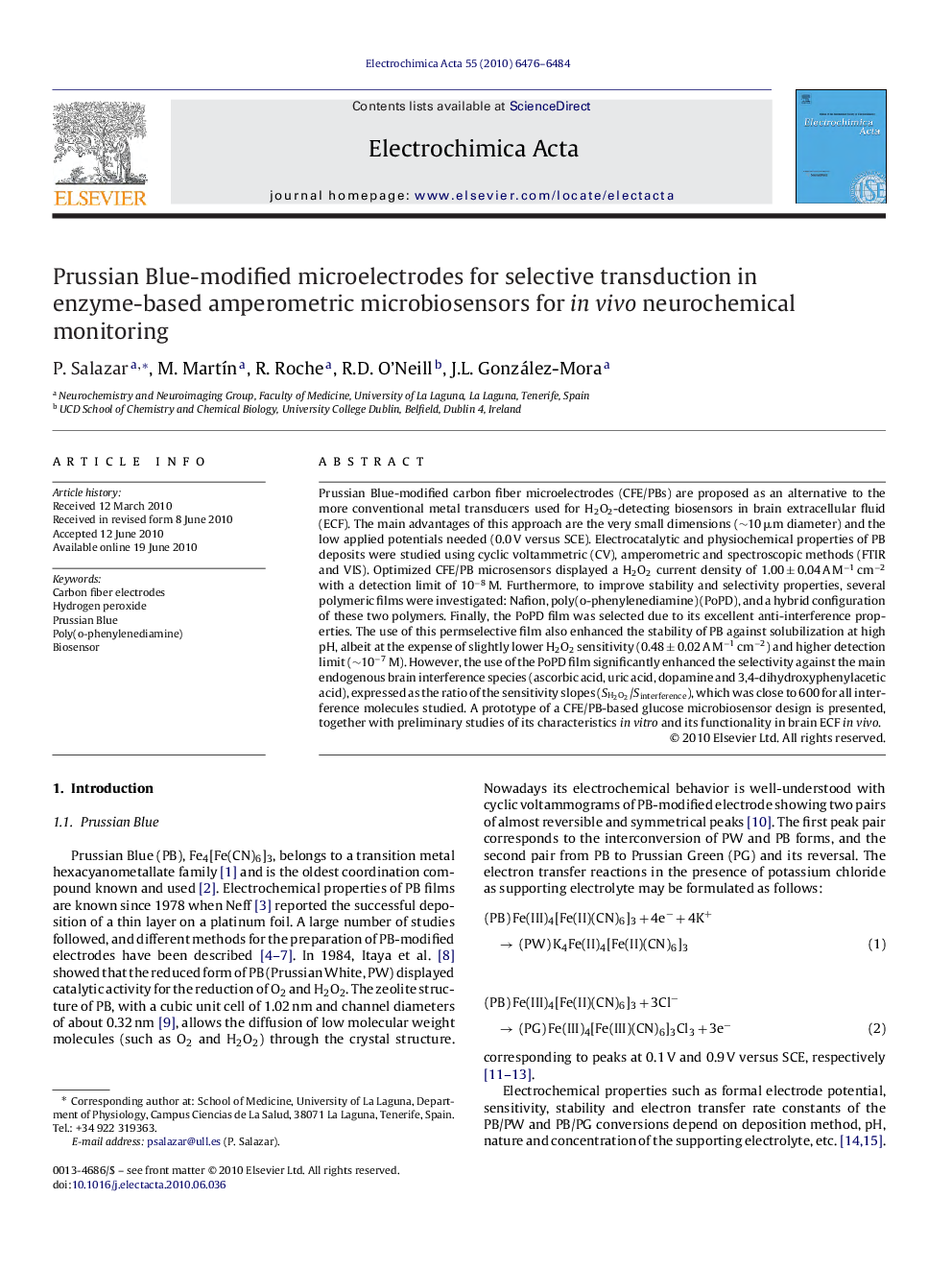| Article ID | Journal | Published Year | Pages | File Type |
|---|---|---|---|---|
| 192197 | Electrochimica Acta | 2010 | 9 Pages |
Prussian Blue-modified carbon fiber microelectrodes (CFE/PBs) are proposed as an alternative to the more conventional metal transducers used for H2O2-detecting biosensors in brain extracellular fluid (ECF). The main advantages of this approach are the very small dimensions (∼10 μm diameter) and the low applied potentials needed (0.0 V versus SCE). Electrocatalytic and physiochemical properties of PB deposits were studied using cyclic voltammetric (CV), amperometric and spectroscopic methods (FTIR and VIS). Optimized CFE/PB microsensors displayed a H2O2 current density of 1.00 ± 0.04 A M−1 cm−2 with a detection limit of 10−8 M. Furthermore, to improve stability and selectivity properties, several polymeric films were investigated: Nafion, poly(o-phenylenediamine) (PoPD), and a hybrid configuration of these two polymers. Finally, the PoPD film was selected due to its excellent anti-interference properties. The use of this permselective film also enhanced the stability of PB against solubilization at high pH, albeit at the expense of slightly lower H2O2 sensitivity (0.48 ± 0.02 A M−1 cm−2) and higher detection limit (∼10−7 M). However, the use of the PoPD film significantly enhanced the selectivity against the main endogenous brain interference species (ascorbic acid, uric acid, dopamine and 3,4-dihydroxyphenylacetic acid), expressed as the ratio of the sensitivity slopes (SH2O2/SinterferenceSH2O2/Sinterference), which was close to 600 for all interference molecules studied. A prototype of a CFE/PB-based glucose microbiosensor design is presented, together with preliminary studies of its characteristics in vitro and its functionality in brain ECF in vivo.
